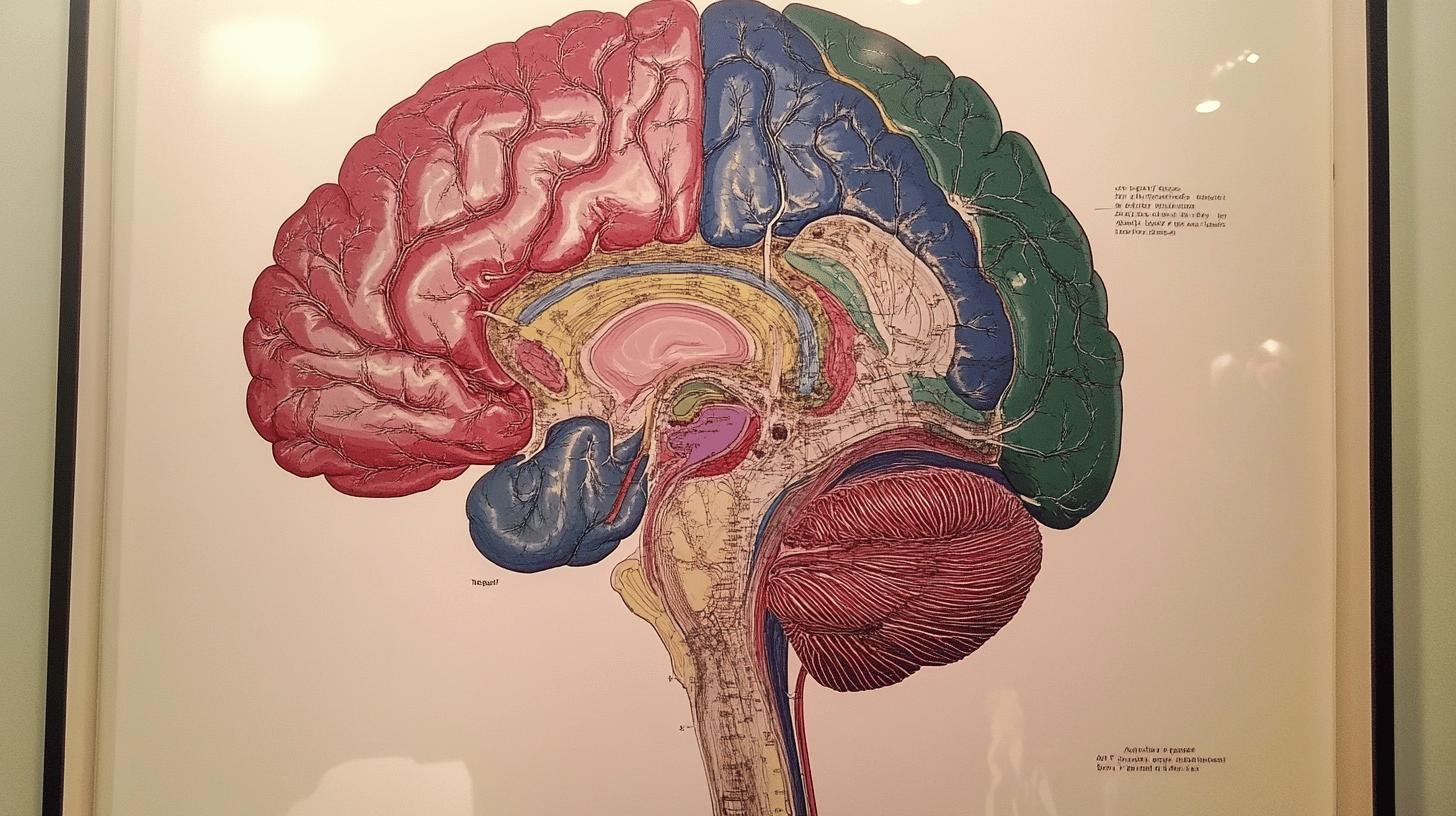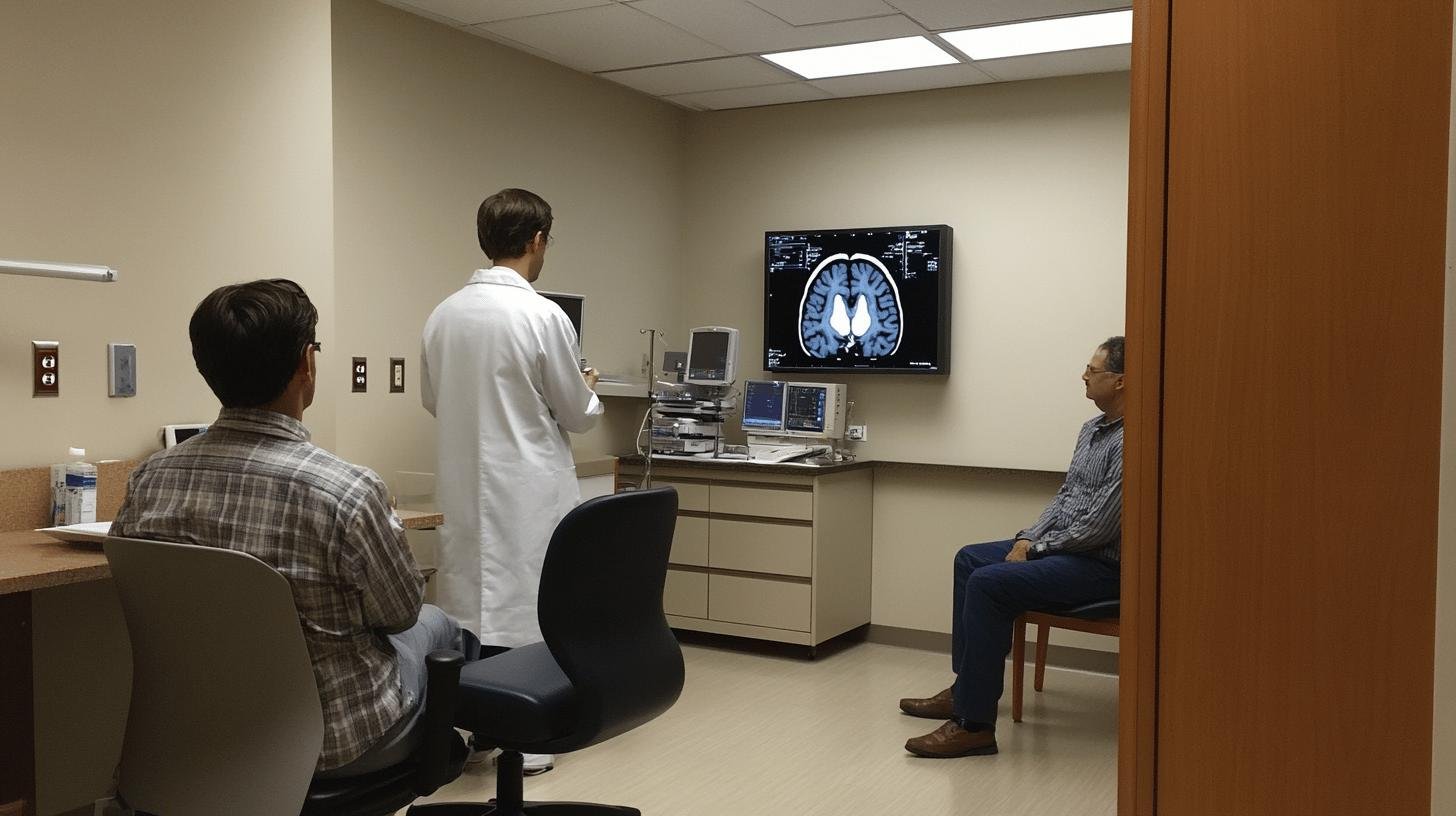TL;DR:
- Neurological Diseases Causing Seizures: Meningitis, encephalitis, brain tumours, eclampsia, and migraine with aura.
- Common Epilepsy Symptoms: Jerking, confusion, staring, loss of awareness, fear, strange sensations.
- Types of Epilepsy: Focal, generalized, combined, unknown onset.
- Diagnosis: Requires at least two unprovoked seizures; tests include EEG, MRI, CT Scan, blood tests, and neuropsychological evaluations.
- Treatment Options: Antiepileptic drugs, surgery, VNS, ketogenic diet, RNS.
- Seizure Management: Stay calm, ensure safety, and call for help if severe.
- Prevention: Recognize triggers, adhere to medication, prioritize sleep, minimize stress, and limit alcohol.
- Direct Primary Care: Provides personalized care and quicker access for managing seizure disorders.
Ever wondered why seizures aren’t only an epilepsy issue? Yep, there are neurological diseases that cause seizures that crash the party for folks with other neurological diseases, too. We’re talking meningitis, encephalitis, brain tumours, and more. Learn about these sneaky culprits and see how they hijack the brain’s electrical signals, leading to those not-so-welcome seizures. Let’s explore these conditions and discover the full scope of how they relate to the big world of seizures. Get ready to uncover the connections you might not expect!
Neurological Diseases That Cause Seizures: Key Insights
Seizures can be unexpected, especially when they’re not due to epilepsy. Many other neurological diseases can also cause seizures. Consider your brain a supercomputer; any glitch can lead to seizures. For instance, brain infections like meningitis and encephalitis create conditions for these electrical upheavals. Brain tumours also disrupt normal brain function, setting the stage for seizures. Although epilepsy is well-known, these other conditions also deserve attention.
- Meningitis: Involves inflammation of protective brain layers.
- Encephalitis: Direct inflammation of brain tissue.
- Brain Tumors: Disrupt electrical activity.
- Eclampsia: Pregnancy complication that may cause seizures.
- Migraine with Aura: Can mimic seizure symptoms.
Globally, epilepsy ranks as the fourth most common neurological disorder. However, the impact of other conditions should not be underestimated. They not only cause seizures but can greatly affect lives. Meningitis and encephalitis, for example, are known for their sudden onset and severity. Brain tumours often require complex treatments. These diseases impact individuals and extend their effects on families and communities. Understanding their prevalence aids in developing effective management strategies.
Epilepsy and Its Symptoms

Epilepsy is a challenging condition in the world of brain disorders. It’s characterized by recurring seizures that can appear without warning. Sometimes, causes like brain injuries or genetic factors are known. Other times, pinpointing the cause is like solving a mystery with a missing piece. Nonetheless, epilepsy manifests through unprovoked seizures, disrupting everyday life.
Common Epilepsy Symptoms
Epilepsy doesn’t discriminate and can affect any part of the brain. Symptoms may include:
- Sudden, uncontrollable jerking
- Temporary confusion
- Staring spells
- Loss of consciousness or awareness
- Psychic symptoms like fear or anxiety
- Strange sensations or feelings
Types of Epilepsy
Epilepsy varies based on where seizures start and spread in the brain:
- Focal Seizures: Begin in one area and may affect consciousness.
- Generalized Seizures: Involve the whole brain, often causing unconsciousness.
- Combined Generalized and Focal Seizures: Exhibit symptoms from both types.
- Unknown Onset Seizures: When the seizure origin is unclear.
Managing epilepsy is like living with a chronic condition that can reoccur without warning. Continuous attention is essential, as seizures can happen more than once. Effective management strategies are vital for living with this unpredictable condition.
Brain Disorders and Seizures
Brain disorders can cause seizures, like an unexpected plot twist in a story. Seizures may occur when the brain’s normal rhythm is disrupted by factors such as inflammation or growth. It’s all about maintaining balance in the brain’s electrical activity. When this balance is disturbed, seizures are likely.
For example, meningitis inflames the protective membranes of the brain. Imagine it as a security breach, leaving the brain vulnerable. This inflammation can lead to seizures by disrupting regular signals. Encephalitis inflames the brain itself, affecting its control centre. It’s like sounding a fire alarm even when there’s no smoke, triggering unnecessary seizure-causing signals.
Brain tumours, too, interfere by pressing on brain tissue and altering electrical pathways. Think of it as a traffic jam disrupting your daily commute. These abnormal growths can spark seizures by changing the brain’s electrical map.
| Disorder | Seizure Mechanism |
|——————|————————————————-|
| Meningitis | Inflammation disrupts brain signals |
| Encephalitis | Brain inflammation triggers unnecessary signals |
| Brain Tumors | Tumors disrupt brain’s electrical signals |
Diagnosis and Treatment of Seizure Disorders

Diagnosing seizure disorders can feel like solving a mystery. To diagnose epilepsy, a person must have at least two unprovoked seizures or one with a high likelihood of recurrence. This means seizures aren’t due to a fever or head injury. The goal is to identify if the brain is having electrical disturbances independently.
Diagnostic Procedures
How do doctors resolve these cases? Key tests include:
- Electroencephalogram (EEG): Monitors brain waves for unusual patterns, checking if the brain’s rhythm is normal.
- Magnetic Resonance Imaging (MRI): Provides detailed brain images to spot unusual features like scars or tumours.
- CT Scan: Similar to MRI but faster, useful for identifying acute issues like bleeding.
- Blood Tests: Eliminate other conditions that might mimic seizures, such as infections or chemical imbalances.
- Neuropsychological Tests: Evaluate the effect of seizures on thinking and memory, akin to a brain fitness test.
Treatment Options
Once diagnosed, treatment options are numerous:
- Medications: Antiepileptic drugs (AEDs) help control seizures by calming brain activity.
- Surgery: Considered when medications aren’t effective; it involves removing seizure-causing brain areas.
- Vagus Nerve Stimulation (VNS): A device sends regular electrical pulses to the brain, acting like a pacemaker.
- Ketogenic Diet: A high-fat, low-carb diet reduces seizures, particularly in children.
- Responsive Neurostimulation (RNS): Monitors brain activity and prevents seizures with small electrical impulses, acting as a bouncer to keep seizures at bay.
Due to individual differences, personalized care plans are crucial. Tailored strategies make a significant difference in managing seizure disorders effectively.
Seizure Management and Prevention Strategies
Are you facing a seizure emergency? Stay calm! Immediate medical help is crucial, especially if a seizure lasts more than five minutes or occurs in quick succession without regaining consciousness. Think of it as a fire drill: have a plan ready. While awaiting help, keep the person safe by clearing away dangerous objects and avoiding placing anything in their mouth. Remain with them until they regain consciousness. Quick action is key to preventing complications.
Prevention Strategies
To manage seizures, consider these strategies:
- Recognize and avoid known seizure triggers.
- Adhere to your medication schedule.
- Prioritize sleep, as fatigue can trigger seizures.
- Use relaxation techniques to manage stress.
- Limit alcohol and avoid recreational drugs.
Medications are essential for control, like carrying an umbrella during rain. However, lifestyle changes are equally important. A balanced diet, regular sleep, and staying active can help reduce seizure frequency. The goal is to create a stable environment for the brain.
The Role of Direct Primary Care in Managing Seizure Disorders

Let’s discuss Direct Primary Care (DPC) and its potential in managing seizure disorders. DPC eliminates insurance middlemen, granting direct access to your healthcare provider. You pay a regular fee, which covers numerous services. It’s like having a VIP pass to your doctor without insurance hassle. With fewer patients, DPC doctors can dedicate more time and attention. This personal approach is crucial for something as complex as seizures.
Why is this beneficial for seizure disorders? Doctors who aren’t burdened with paperwork can focus on creating personalized treatment plans. Whether it’s finding the right medication mix or suggesting lifestyle changes like stress management and diet, DPC providers are there for you. They can also help identify seizure triggers and adjust care plans swiftly, bypassing insurance delays. DPC may be the best choice for an affordable and personalized healthcare experience.
Final Words
Diving into neurological diseases that cause seizures, we unravelled how these conditions go beyond epilepsy. Brain disorders like meningitis, encephalitis, and tumours disrupt our brain’s electrical activity, sparking seizures.
Epilepsy, a major player, shows varied symptoms across its types, making understanding them crucial. Brain disorders also have distinct seizure mechanisms, influencing treatment options.
Direct primary care emerges as an ally in seizure management, offering personalized and affordable plans.
By grasping these insights, we’re better equipped to navigate neurological challenges, aiming for brighter health outcomes. Here’s to facing these hurdles with knowledge and positivity!
FAQ
What causes seizures in adults for the first time?
A: Brain injuries, infections like meningitis, and strokes can trigger seizures in adults. If you experience one unexpectedly, it’s essential to get a doctor’s evaluation.
What causes epilepsy?
A: Epilepsy is caused by abnormal electrical activity in the brain. Triggers can include genetic factors, head trauma, brain conditions like tumours, or diseases affecting the brain.
What are the warning signs of a seizure?
A: Warning signs include unusual feelings, smells, or sounds. Some people might experience dizziness or confusion shortly before a seizure begins.
What are the types of epilepsy?
A: Types of epilepsy include generalized epilepsy, which affects both sides of the brain, and focal epilepsy, which starts in one specific area. Each type has unique characteristics and seizure types.
What causes seizures in adults with no history?
A: New-onset adult seizures can be due to underlying conditions like brain infections, tumours, or metabolic imbalances. It’s crucial to seek medical advice for proper diagnosis.
What is a focal onset seizure?
A: Focal onset seizures start in one part of the brain and can vary widely in their effects. They might stay confined or spread, creating more complex symptoms.
How can neurodegenerative diseases cause seizures?
A: Neurodegenerative diseases like Alzheimer’s can damage brain cells, disrupting normal electrical activity and leading to seizures in affected individuals.
What does an anxiety seizure look like?
A: Anxiety seizures may resemble panic attacks, with symptoms like rapid breathing, racing heart, and intense fear. Unlike typical seizures, they’re usually linked to stress and anxiety.
What chronic illnesses cause seizures?
A: Chronic illnesses like diabetes (with severe hypoglycemia), lupus, and multiple sclerosis can provoke seizures. It’s vital to manage these conditions to reduce such risks.
Which neurological disorders can mimic seizures?
A: Disorders like migraine auras, transient ischemic attacks, and conversion disorders can mimic seizures with sudden neurological symptoms. Proper evaluation is needed to distinguish them from seizures.

